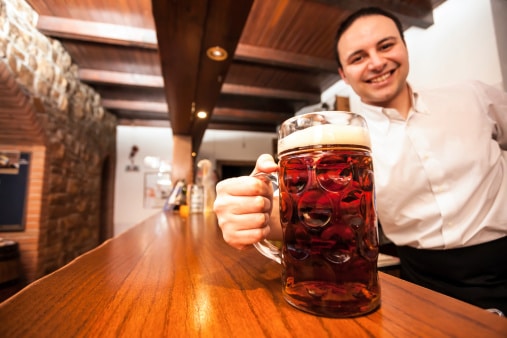There are thousands of breweries in America today, whereas just a dozen years ago there were only a few hundred. In fact, in the late 1970s there were fewer than 100. This boom in the beer market has been a boon to serious beer drinkers, but the myriad types and brands of beer out there can be confusing to people who don’t know much about the beverage beyond little snippets of info, such as IPAs are bitter and usually high in alcohol content. This can prove to be a nightmare for a freelance marketing writer because many of the beer’s qualities that they wish to highlight can fall upon a deaf ears. Many consumers won’t know what to think about a beer that has been “bottle conditioned,” nor will they care.
This doesn’t mean one should give up. One should, instead, write to appease a different audience. This audience is a growing number of beer enthusiasts, and addressing them may prove to be just as difficult for writers. Such individuals will be very knowledgeable about beer, and will want to know much more about a beer beyond its “smooth taste” or “drinkability,” especially since the latter adjective is also true of water, milk and any other fluid that one can conceivably drink. Therefore, it is important to understand what beer enthusiasts want to read when they are looking for more information about a new brewpub or brewery. Here are the two things to remember for anyone who wants to write about beer.
Note the Ingredients
If you were to say you had a fantastic meal at a restaurant, the first question someone might ask in response would probably be: “What was in it?” The same goes for beer. A beer will always contain yeast, hops, water and grains. For the latter, malted barley is the most common. While this may seem simple, there are tens of thousands of variations. Furthermore, many brewers, such as Dogfish Head, create very unique beers by including less traditional ingredients. A writer should note any odd ingredient (spices, fruit extracts, etc), as well as the types of hops and grains used to make the beer. Cascade hops, for example, pack more of a citrus aroma than a hop of the Saaz variety.
If there is another aspect about the brewing process that is unique, note that, too. Scotland’s Innis & Gunn, for example, stores their beer in oak to give it a rich, smoky taste.
MASTO!
This is a basic mnemonic device to remember:
- Mouthfeel
- Appearance
- Smell
- Taste
- Overall
These are five things that you as a beer taster should note. The mouthfeel is how it literally feels as you swish the beer around your mouth. Stouts and porters can feel very silky and almost like melted chocolate, while some lighter ales can seem overly carbonated. Appearance is what the beer looks like once it’s been poured into your glass. The smell is rather obvious, as is the taste and the overall impression that you get from the beer. Though you may not initially know a lot about beer, and some of your descriptions may seem a little generic, your palate will eventually become more discerning as you drink more beer.
However, an important thing to remember if you are going to be tasting a lot of beers is to start out with the more delicate flavors first. An Imperial IPA, for example, will have a very sharp taste that may overwhelm your palate, thereby making something a little lighter taste bland. Another thing to remember while tasting beer is that you have been given the opportunity to write about beer. How fantastic is that?








